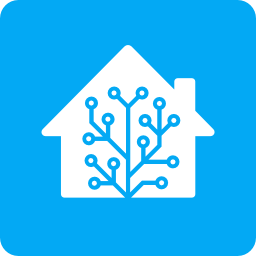I see a lot of posts about people who like their Zigbee and Z-Wave products. As I’m setting up the hardware in my home, I’m using Wi-Fi products because I already have Wi-Fi. I don’t see much difference in price. What is the actual benefit of setting up a separate network for home devices? Is there a reason that I should consider setting up one of these networks?
One thing I like about Z-Wave and Zigbee devices is that they can’t connect to the internet no matter what, because they don’t have the hardware for it.
- This means you don’t need to worry about them phoning home with usage data. (privacy)
- It means you don’t need to worry about them being used by a hacker to penetrate your network. (security)
- It means you don’t need to worry about them being a node in some botnet mining crypto for someone else with your electricity. (resource usage)
You’ve already got HomeAssistant to connect them to your Google Home or HomeKit account, so you can still turn on your closet light from the bar or whatever. You’re not losing anything by them not being connected to the internet directly. You just never have to worry about that stuff. Instead of having to keep 40 devices that were sold by some company that no longer exists up to date on their firmware, you just need to keep HA up to date.
All it costs is one $30 usb dongle.
I love ZigBee sensors basically because they can run years with a coin battery, and I don’t dislike WiFi devices that are connected to the power, I just put them in a VLAN with no Internet access.
It’s great that you have the skills to do that, but we both know that most people buying smart home gadgets don’t have those skills. I’d prefer those people to have a safe by default setup, which is why I advocate for Zigbee and Z-Wave.
ZigBee devices are really nice because they are low energy, easy to set up and don’t add extra strain on your wifi access point(s). The battery operated ones last for months to years on a small button cell battery and most plug-in/wired ones act as repeaters. Also, a lot Wi-Fi devices are cloud based or require flashing to make them completely local. With ZigBee or even Zwave you are certain they have no internet access and cannot phone home without you having to put any precautions in place.
Can confirm that zigbee is much better for IOT things, I find the zigbee stuff is quicker to react to events as there is not WiFI setup. Some WiFi devices running on batterys will have lag while they get WiFi link back up.
If I already have a handful of WiFi devices, do you think it is worth it to replace them? Say, 4-5 switches. I’m planning to invest in a few more and a home thermostat. I certainly want to commit before buying a thermostat, since they tend to be a little more pricey.
Is there a greater danger of ZigBee not being sustainable over decades? WiFi will probably be available for the remainder of my lifetime because it is already so ubiquitous.
ZigBee is already so widespread that I don’t see it going away. I’d be much more worried about your WiFi devices.
While WiFi as a network technology certainly isn’t going anywhere, most WiFi-connected devices talk to a service on the internet. You probably created an account somewhere to manage your WiFi devices. So if the manufacturer shuts down their service, which happens all the time when they either shut down the whole business or abandon a product line, you will have no way to manage your devices.
ZigBee will continue working as long as your hardware does, because you control the software managing it.
Probably not worth replacing things now but you may consider using zigbee and zwave on any new devices. I have a mix of all three in my setup.
I would say unless they’re cloud based it’s not really a priority with sometime like home assistant since it allows for devices of different platforms and technologies to work together.
It’s hard to know with technologies, but I don’t think ZigBee is a big risk and since it’s local even if they stop producing them that doesn’t break your existing devices. I mean, Wi-Fi will undoubtedly still exist, but that doesn’t mean the platforms and protocols that Wi-Fi devices use will and devices that connect to the internet can be disabled by updates.
It depends, but I’d say you should definitely try it. Zigbee is so cheap (not just initial cost, but batteries also last waaasy longer and it doesn’t saturate your local network), and it’s very possible you can still build a nice mesh, maybe reusing a couple of your Wi-Fi switches somewhere else in the house if you need a Zigbee router in one of those spots.
It was never the best idea to fill your home with tiny Wi-Fi devices. Wi-Fi IoT devices are more for people who basically want to automate a couple of things, not 40. I would become mad just for the battery changes, and scared as heck I’d be toasting my brain with so many devices screaming radiowaves (and a clear slowdown of my Internet connection).
I never that about this but this is very true, zigbee and zwave are dedicated separate radio networks. With the Thread/Matter that is very possible if it has a thread border router setup. Apple TV, HomePod, and even some Nest routers can do this.
Do you know roughly how much range they can get? I have wifi sensors out like 500 feet from my house that work OK, but in my research on Zigbee most people say like 100 feet or less?
While I don’t have a good real life answer since I haven’t done that, the newest z-wave devices have a long range mode for exactly this type of thing and at least on paper have well over this range. You might do so research on those and look for those devices specifically
Thanks, I’ve seen a few but they seem more expensive than the WiFi equivalents, I’ll look into some more
If this were my decision, I’d put batteries as the top decision factor.
If your devices are battery powered, Zigbee/z-wave will last several times WiFi devices before you need to replace the battery. I would get frustrated with this very quickly.
If your devices are plugged in to a reliable source of power, then obviously this is not a factor. Or maybe phrase that the other way: if your devices are WiFi, future you will thank present you if you can find a way to plug them in
I’ve got about 30 zwave devices, and at first the idea of the 900mhz mesh network sounded like a really solid solution. After running them for a few years now if I were doing it again I would go with wifi devices instead.
I can see some advantages to the mesh in a house lacking wifi coverage. However I would guess most people implementing zigbee/zwave probably have a pretty robust wifi setup. But if your phone doesn’t have great signal across the entire house a lightswitch inside of a metal box in the wall is going to be worse.
Zwave is rather slow because it is designed for reliability not speed. Not that it needs to be fast but when rebooting the controller it can take a while for all of the devices to be discovered, and if a device goes missing things break down quickly, and the entire network becomes unresponsive even if there is another path in the mesh. Nothing worse than hitting one of your automations and everything hangs leaving you in the dark because one outlet three rooms over is acting up.
It does have some advantages, like devices can be tied to each other (i.e. a switch tied to a light) and they will work even without your hub being up and running (zwave controller I think can even be down).
Zwave/Zigbee also guarantee some level of compatibility/standardization. A lightswitch is a lightswitch it doesn’t matter which brand you get.
On the security front Zwave has encryption options but it slows down the network considerably. Instead of just sending out a message into the network it has to negotiate the encrypted connection each time it wants to send a message with a couple of back and forth packets. You can turn it on per device and because of the drawbacks the recommendation tends to be, to only encrypt important things like locks and door controls which isn’t great for security.
For Zwave 900mhz is an advantage (sometimes). 900mhz can be pretty busy in densely populated areas, but so can 2.4 for zigbee/wifi. If you have an older house with metal boxes for switches/plaster walls the mesh and the 900mhz penetration range may be an advantage.
In reality though I couldn’t bridge reliably to my garage about thirty feet away, and doing so made me hit the Zwaves four hop limit so I couldn’t use that bridge to connect any additional devices further out. With wifi devices connecting back to the house with a wifi bridge, a buried Ethernet cable, etc can extend the network much more reliably. I haven’t tried any of the latest gens of Zwave devices which are supposed to have higher range.
The main problem with wifi devices is that they are often tied to the cloud, but a good number of them can be controlled over just your LAN though. Each brand tends to have their own APIs/protocols though so you need to verify compatibility with your smart hub before investing.
So if you go the wifi route make sure your devices are compatible and specifically check that your devices can be controlled without a cloud connection. Especially good to look for devices like Shelly that allow flashing of your own firmware or have standardized connection methods in their own firmware (Shelly supports MQTT out of the box)
But if your phone doesn’t have great signal across the entire house a lightswitch inside of a metal box in the wall is going to be worse.
I hesitated expecting exactly this, but so far it’s worked flawlessly.
My house is older construction with very dense walls, and yes all the switch boxes are metal. When I enter my house, cell coverage drops to one bar and might goto zero as I walk around the house (thank goodness for WiFi assist). WiFi disappears as I go through certain doorways so I need a mesh and mesh routers about 10-15’ apart can’t communicate with each other. Back when cordless phones were a thing, they would only cover a room, although interestingly 900MHz was the best cordless phone frequency and higher frequencies had worse range. My house is horrible for radio signals.
But both Zigbee and zWave have worked really well. It probably helps that my first priority was smart switches, which are one or more repeaters in every room and more likelihood of straight lines through doorways, but it just works. Much better than WiFi.
I’ve had the same experience you describe with Zwave, especially the range and response issues, and in hindsight should have used the already reliable WiFi network. Especially since our home layout is a bit unconventional and node placement is not ideal considering the Zwave hop limits. For battery devices that consideration might be different, but I try to avoid those anyway.
Zigbee/Z-Wave/Thread are all meant for sensors. WiFi not so much. It’s easier to host more sensors on the purpose-built network types. Special consideration for Z-Wave since it uses different frequency than WiFi, which the others do not.
WiFi and batteries don’t really go together, which also puts a real limit on what you can do there.
I run Zwave and love it. Advantages:
- better range and less interference in 900mhz band with meshing
- better battery life. WiFi uses up to an order of magnitude more power. Battery in Zwave devices lasts for years, with new ones being even better in this regard
- more secure as they cannot be hacked by hacking your internet or getting on your WiFi.
- more feature rich. Zwave devices tend to be geared towards more pro use and tend to have just about every feature you can imagine
- The Zwave standards body is quite strict in ensuring devices adhere to the standard so it’s much harder to get “stinker” devices that don’t. This is a bigger problem with zigbee for example.
- fully local. You can be 100% sure they aren’t sending your data off somewhere
- Generally high quality. I’ve had quite good luck with pretty much all the Zwave devices I’ve bought. They last a long time and are reliable if your mesh is working properly (enough powered repeater nodes).
I prefer zwave and zigbee because they give me 12 months plus on small batteries, and I can not get this on WiFi devices. This greatly improves where I can install sensors and the like.
Even when I have a larger battery, such as the 60ah battery I use for my back garden lighting, I still use them as it reduces power draw over a WiFi controller.
I can also directly connect them to smartthings and more recently home assistant thst I have migrated to rather than connecting to a WiFi device via a Web service. This improves reliability and speed on average.
I get no problems with running a large network of such devices, I have over 100 bulbs, relays, plugs, and sensors that are connected. My WiFi is decent and supports 8 nest cams that are outside plus another 20 or so devices that are inside, so it offers a similar range for me.
Home Assistant + a dongle of your choice. I won’t even get into zigbee vs zwave. Both are great just different vendor support.
And with home assistant, it’s easy to have both
With non-wifi devices I can be certain I won’t be bamboozled into buying something cloud-only
I get what you’re saying, but beware of the non-wifi devices that only operate through a proprietary gateway to a cloud-only service.
I also thought zigbee was more open and had less licensing fees.
But also more open for the vendors to come up with new and creative ways to violate the protocol.
Seems like this is relevant:
I read it’s something like typical $5 price difference and z-wave have to pass compatibility tests
I initially went with z-wave because
- 900MHz frequency has better range in my house
- compatibility is good
- my local home center had a few z-wave devices but no Zigbee
But I ended up with both, no problem, and will soon add Thread.
I strongly prefer local networks instead of WiFi so I know they’re not calling home, it’s cleaner separation, and allows battery devices
Totally agree. There is no way a zigbee or zwave can phone home. Somebody pointed this out earlier and I just hadn’t put any thought into that aspect.
Matter sort of makes Wifi more viable, but Zigbee is a proper mesh that generally works great. The more devices, the more reliable the network.
Zwave theoretically works similarly, but I’ve found it to have way more problems.
I have high hopes for Matter but as it stands today it’s a pretty big mess and usability is generally horrible.
Oh? I run 40 Matter devices and they’ve been pretty great. The downside is that they don’t mesh or act as repeaters as Zigbee does. Simple setup via HA as well.
I have Zigbee stuff. Here’s what I like about that: they bridge between each other (if they’re powered rather than battery operated) and that extends the range. The range can be great to begin with! They’re not on my network, adding confusion or load on the access points, plus they can’t phone home… all local. Then there’s smart switches, and I’m going to point out that without WiFi they can’t be controlled, but Zigbee? Sure, I can easily power cycle my router and access points with Zigbee smart plugs! In fact I have an automation to do that daily. Finally, if something is WiFi you can’t know in advance if it’s cloud based or not, and regardless of that it’s a potentially unsafe device that is connected to the internet. Low power, but botnets work with numbers rather than power.
I have 8 Z-wave devices now, including a couple “long range” devices. With the first couple, I would sometimes have trouble with the farthest, battery-powered device dropping out of the network occasionally, but that hasn’t happened as I’ve added more devices. I fought with pairing the initial devices - clicking the right series of buttons at the same time as telling HA to look for devices to join - but all the recent devices have just has a QR code - scan it into HA, and the device just shows up when I turn it on. I don’t know how much of this difference between new and old is my learning curve vs better product support, but I am really happy with my Z-waves now.
Z-wave rather than wifi so I know they aren’t phoning home.
My first couple of battery operated zwave devices were hard fails. Instantly offline and rarely came back. That was years ago now. I’ve got temp/humidity sensors and water/leak detectors going for a year now at 95% battery still. The new 800 series Zooz devices pretty much guarantee you won’t have range issues. I’ve never looked back after choosing zwave.
My network is more than capable of supporting Wi-Fi devices but i simply choose not to. It’s an attack vector i didn’t need and overkill for most devices.
I very briefly tried a couple zwave light bulbs with a USB zwave adapter for Home Assistant, but couldn’t get it reliable. I do like the mesh + low power idea though and played around with ZigBee dev boards previously.
I have settled on mostly Tasmota firmware on ESP8266 based devices. Lots of switches (from the CloudFree shop among others), smart plugs, and other devices. I also like to assemble my own sensor/relay boards, which Tasmota is great for. I did have to set a fixed 2.4Ghz channel on one router, and later set “IoT mode” on my Unifi network, to avoid devices falling off the network. I also have flashed most of the devices, but am happy to do that (not so different from uploading an Arduino sketch once you’re used to it).
Zigbee sucks and is a source of constant problems for me, but you can’t have a thumb sized door sensor using wifi, it uses too much energy.
What kind of problems? So many others present it as virtually worry free.
“Why does my fucking light not turn on, do i need to add yet another repeater or do i need to reset slzbw-06 yet again” kind of problems
Also at some point i discovered nothing at all works because homeassistant decided to give my network a new identity so I needed to pair everything again. My fault for not having this backed up, but it’s not something that should happen in a system that’s “worry free”.
I also haven’t seen any problems with either my z-wave mesh or my Zigbee mesh, but it’s an interesting tell that several network troubleshooting features have been added to Home Assistant over the last year or two
Zigbee is wonderful. Be mindful of your network layout. Ensure you have plenty of routers strewn throughout, as it’s a mesh network.
Most smart plugs are routers, which makes it easy. I’ve had great success with THIRDREALITY plugins.
The best thing I’ve done: installed a POE coordinator in the center of my home. The SLZB-06M has been a champ.
Two huge benefits of going with Zigbee over WiFi:
- Zigbee is offline.
- Adding WiFi devices adds more interference and congestion to your network, causing instability. Zigbee rides in the same spectrum, but just a sliver of it.
More ip devices on your network also increases attack surface. Keep it simple.








